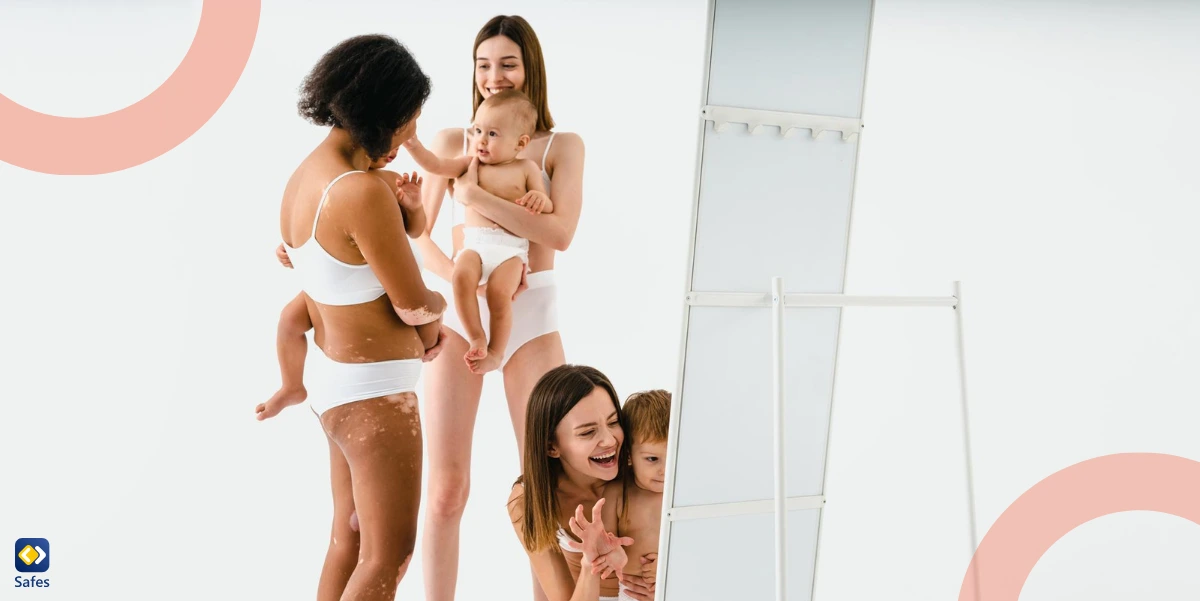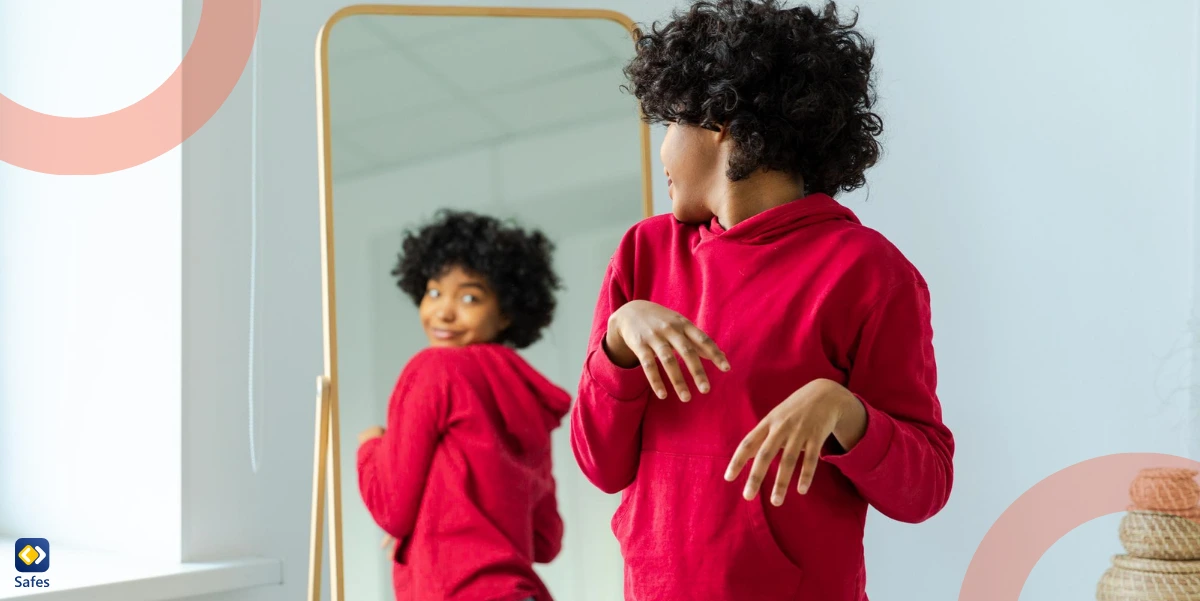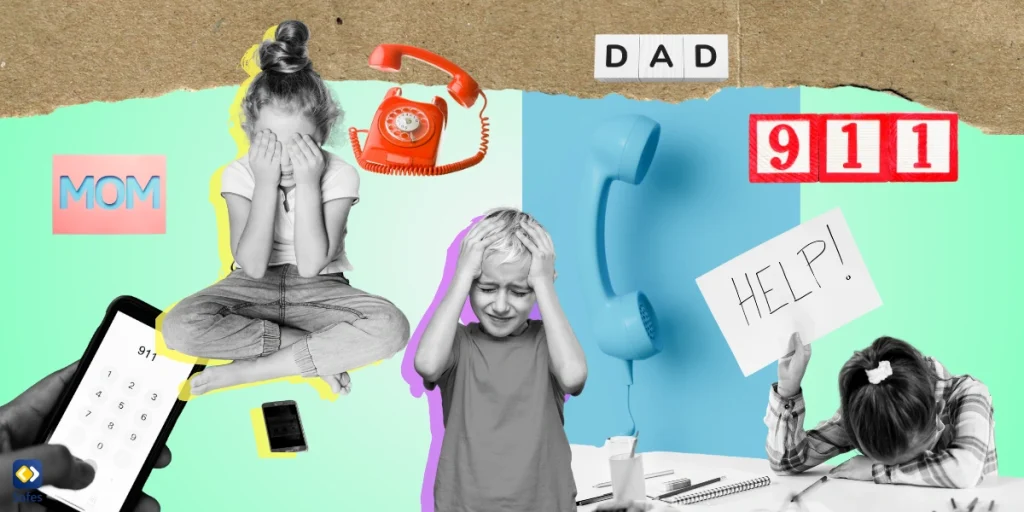Nudity at home is a subject that can often raise questions or discomfort for parents. While it may seem like a private issue, how families handle nudity can deeply influence a child’s understanding of body image, personal comfort, and boundaries. In a world where social media promotes unrealistic beauty standards, these conversations are more crucial than ever.
Download and Start Your Free Trial of the Safes Parental Control App
This blog delves into the psychological aspects of nudity, its role in fostering body positivity, strategies for establishing boundaries, and the impact of social media. By the end, you’ll have practical tips to cultivate a respectful, empowering environment at home.
Nudity, Body Image, and Healthy Development
The relationship between nudity and body image plays a key role in developing a healthy sense of self-worth and acceptance. By normalizing nudity, parents can help children form a positive body image, contributing to greater confidence in their own skin.
Normalizing Bodies Through Nudity
Nudity at home helps children see the human body as a normal, non-sexual part of life. When they observe family members in everyday settings, they learn that bodies come in all shapes, sizes, and colors—something completely natural. This exposure encourages comfort with their own bodies and lessens the stigma often tied to being naked. By seeing nudity as part of daily life, children can grow to embrace their bodies with pride.
Fostering Confidence and Self-Esteem
When children feel comfortable in their own skin, they are less likely to develop negative body image issues later in life. According to an 18-year longitudinal study, family dynamics and early exposure to healthy body image norms significantly influence children’s self-esteem and overall body satisfaction. It’s essential for parents to be mindful of age-appropriate nudity, as children naturally seek more privacy as they grow. This phase marks a developmental milestone, and parents should respect these boundaries while continuing to emphasize body positivity.
Sexuality vs. Nudity: Helping Children Understand the Difference
As children grow, they may begin associating nudity with sexuality. It’s important for parents to clarify that nudity and sexuality are separate concepts to avoid confusion or embarrassment.
Teaching the Difference Between Nudity and Sexuality
Nudity is a natural state, while sexuality relates to adult relationships. As children mature, they may start to link nudity with sexual behavior. Parents should explain that nudity is often linked to everyday tasks like changing clothes, showering, or sleeping—none of which are inherently sexual. Clear, age-appropriate discussions help children navigate these concepts in a healthy way.
Parents can also seek guidance from sexual education books to facilitate these discussions and ensure they approach the topic with confidence and clarity. These resources can provide valuable information on how to talk about bodies, boundaries, and relationships in a way that is respectful and nurturing.
Parents should create a safe, non-judgmental space for questions, allowing kids to develop a healthy understanding of their bodies and relationships.
Cultural Variations in Nudity Norms
Attitudes toward nudity vary widely across cultures. What’s acceptable in one culture may be viewed differently in another. Parents should be mindful of the cultural context in which they are raising their children, as this influences their perceptions of nudity and body image.
Beyond the Birds and the Bees
In “Beyond the Birds and the Bees: Bringing Home a New Message to Our Kids About Sex, Love, and Equality,” Bonnie J. Rough offers a progressive approach to discussing body image, sexuality, and relationships with a look at Dutch culture, where openness and age-appropriate conversations about these topics are normalized. The book encourages open, respectful discussions that go beyond traditional views, helping parents foster a balanced, inclusive perspective for their children.

Parental Nudity at Home: Is it Okay?
Knowing when to be nude in front of children is crucial for fostering body positivity and healthy boundaries. Parents should consider their children’s age and development, respecting their evolving need for privacy.
How Long Is It Okay for Parents to Be Nude in Front of Their Kids?
During early childhood, nudity is often part of routines like bath time or changing clothes. At this stage, children are curious but don’t yet have a strong sense of privacy. Parents can use these moments to normalize the human body, teaching children that nudity is a natural part of life.
As children reach school age, they may express a desire for more privacy. It’s essential for parents to recognize these cues and gradually limit nudity to private spaces like bathrooms and bedrooms. Open discussion about boundaries ensures everyone’s comfort.
When Should Parents Stop Being Nude in Front of Their Kids?
Every child develops a sense of privacy at a different age and at different rates, and there’s no specific age when nudity becomes uncomfortable for them. As they mature, it’s essential to respect their personal space and be attentive to their comfort levels. Dr. Lea Lis, a board-certified psychiatrist, emphasizes that parents should follow their child’s lead regarding comfort with nudity. By adolescence, many children naturally become more self-conscious about nudity, regardless of their upbringing. Some may continue to feel comfortable with family nudity, while others may prefer more privacy. Parents should respect these decisions and use cues to determine their child’s comfort level, even if nothing is stated directly. Open communication about privacy and comfort is crucial during this transition.
Comfort vs. Boundaries: Finding the Right Balance
Striking a balance between comfort and boundaries is essential for a harmonious family dynamic. Clear communication and mutual respect are key in navigating this sensitive topic.
Establishing Family Norms
Creating clear family norms around nudity helps maintain a respectful environment. These norms should reflect the comfort levels and values of all family members. Consistency in enforcing these rules ensures a safe and respectful home for everyone.
Teaching Consent and Respect
Nudity at home provides an opportunity to teach children about consent and respect. Parents can help children learn to respect personal boundaries by introducing concepts like knocking and asking permission before entering someone’s room. These lessons lay the groundwork for healthy interpersonal relationships.
The Influence of Social Media on Body Image and Nudity
In the digital age, social media plays a major role in shaping perceptions of body image. Here’s how these influences intersect with body positivity and boundaries.
Unrealistic Body Standards
Social media often promotes edited and filtered images, setting unrealistic beauty standards. Parents can combat this by fostering an environment at home where natural bodies are celebrated. Teaching children to view these images critically empowers them to build resilience against the harmful effects of social media.
Privacy Concerns in the Digital Age
In an era where sharing moments online is common, privacy concerns around nudity are more important than ever. Parents must educate children about the risks of sharing sensitive content like nude photos and emphasize the importance of maintaining personal boundaries in the digital world.
Age-Appropriate Discussions About Nudity
The way parents talk about nudity should depend on their child’s age and developmental stage.
Early Childhood
For young children, nudity is often part of daily routines. Parents should use these moments to teach body positivity and proper terminology for body parts. These lessons set the stage for open conversations about health and safety.
Tweens and Teens
As children grow older, their understanding of nudity and body image becomes more complex. Parents should respect their growing need for privacy while continuing to promote positive messages about body image. Encouraging open dialogue about cultural norms and personal comfort can help teens navigate this stage with confidence.
Books and Media for Positive Body Image
Books like “Your Body Belongs to You” by Cornelia Spelman for younger children, and “The Body Image Book for Girls” by Charlotte Markey for teens, offer valuable lessons on body autonomy and self-acceptance. TV shows like “Sesame Street” and documentaries like “The Mask You Live In” help children of all ages explore body positivity and consent.
Practical Tips for Parents
Creating a supportive environment where children feel safe discussing body image and personal boundaries is essential.
Creating a Safe Environment
Parents should foster a judgment-free zone at home, encouraging open communication about nudity and body image. Creating a space where children feel comfortable asking their questions allows them to seek accurate information directly from their parents, building trust and ensuring they are well-informed. Modeling positive body language and avoiding negative self-talk can also help children embrace body positivity.
Monitoring Media Influence
Parents can guide their children toward body-positive media and teach them to critically evaluate the unrealistic portrayals often found online. This empowers children to navigate the digital world with a healthy perspective. Additionally, tools like parental controls on Android and iPhone parental controls can help parents manage and monitor their children’s online activities, ensuring they are exposed to age-appropriate content and developing healthy digital habits.

How Safes Can Help with Nudity at Home
Safes, a parental control app available for Android and iOS, can support parents in creating a healthy environment at home. The app allows parents to monitor and manage the type of content their children access online, helping to shield them from harmful messages about body image.
Additionally, Safes can provide parents with tools to set boundaries around screen time and track online behavior. By creating a safer digital space, parents can focus on nurturing open communication and positive values at home.
Discover how Safes can improve your family’s digital experience. Sign up for a free trial today and experience the benefits of Safes for your family!
Conclusion
Creating a balanced approach to nudity at home requires open communication, respect for boundaries, and proactive discussions about body image. By fostering an environment of acceptance and understanding, parents can help their children feel comfortable in their own skin and navigate the challenges of growing up in a digital age. Remember, every family is unique, and what works for one may not work for another. Trust your instincts and keep the lines of communication open.
Your Child’s Online Safety Starts Here
Every parent today needs a solution to manage screen time and keep their child safe online.
Without the right tools, digital risks and excessive screen time can impact children's well-being. Safes helps parents set healthy boundaries, monitor activity, and protect kids from online dangers—all with an easy-to-use app.
Take control of your child’s digital world. Learn more about Safes or download the app to start your free trial today!




